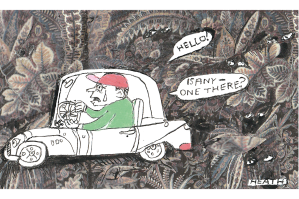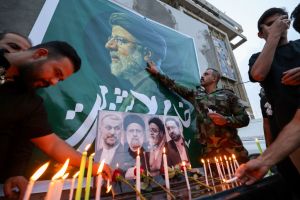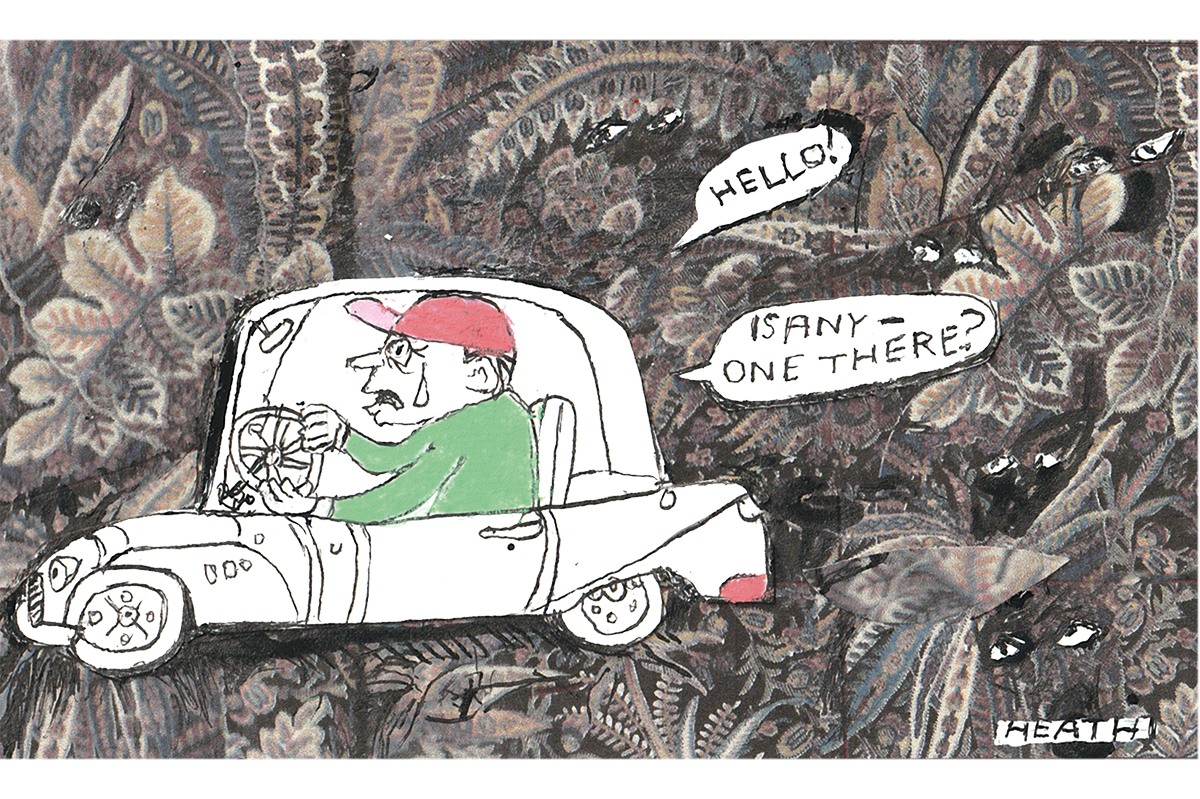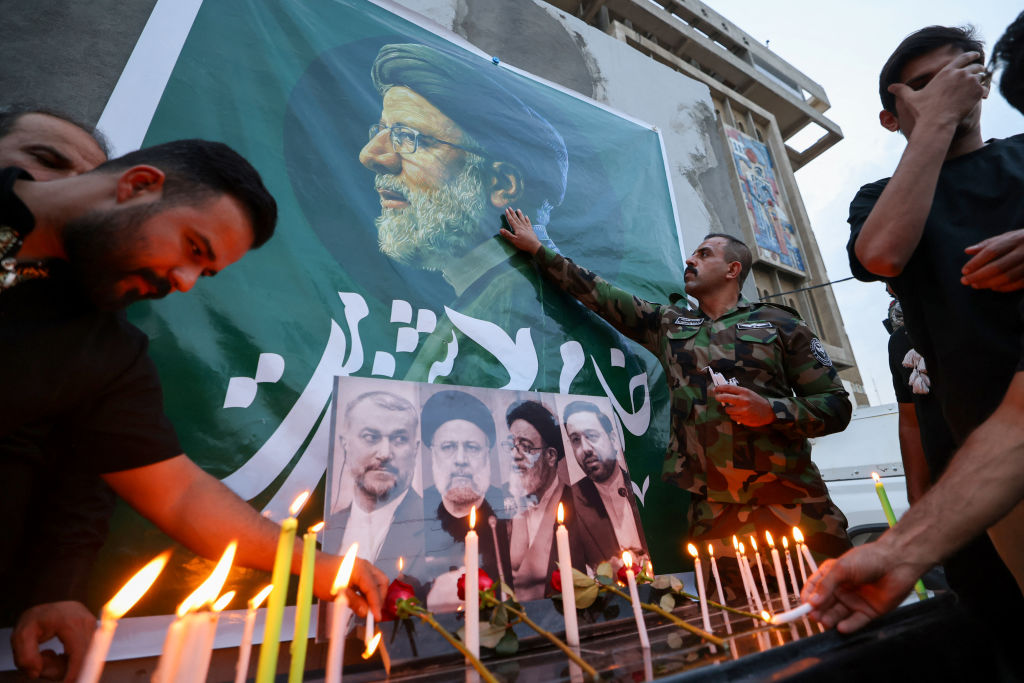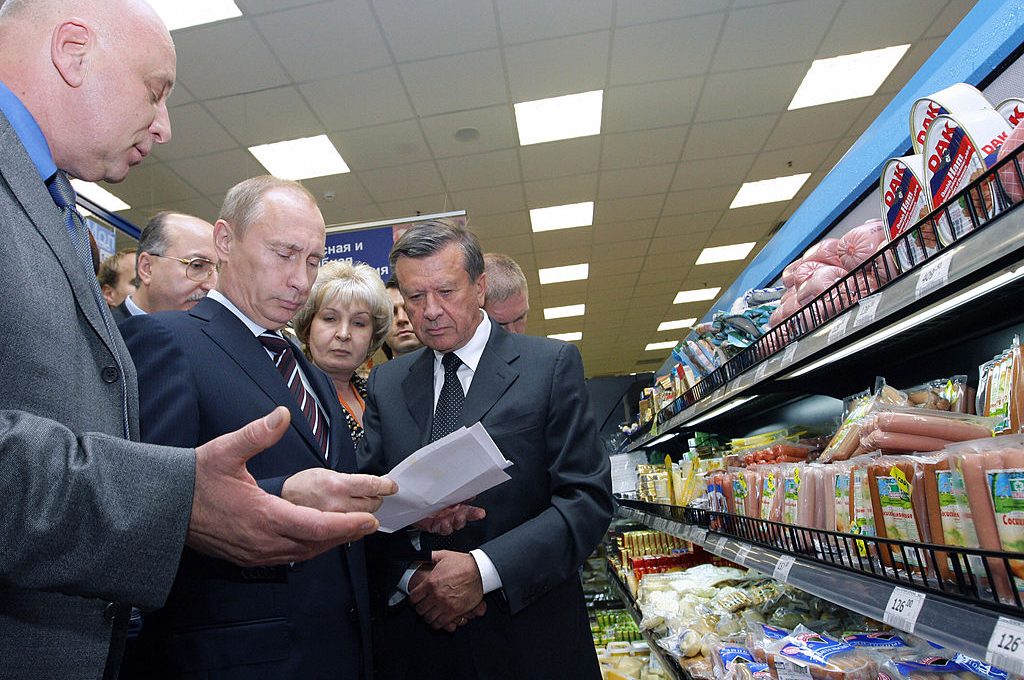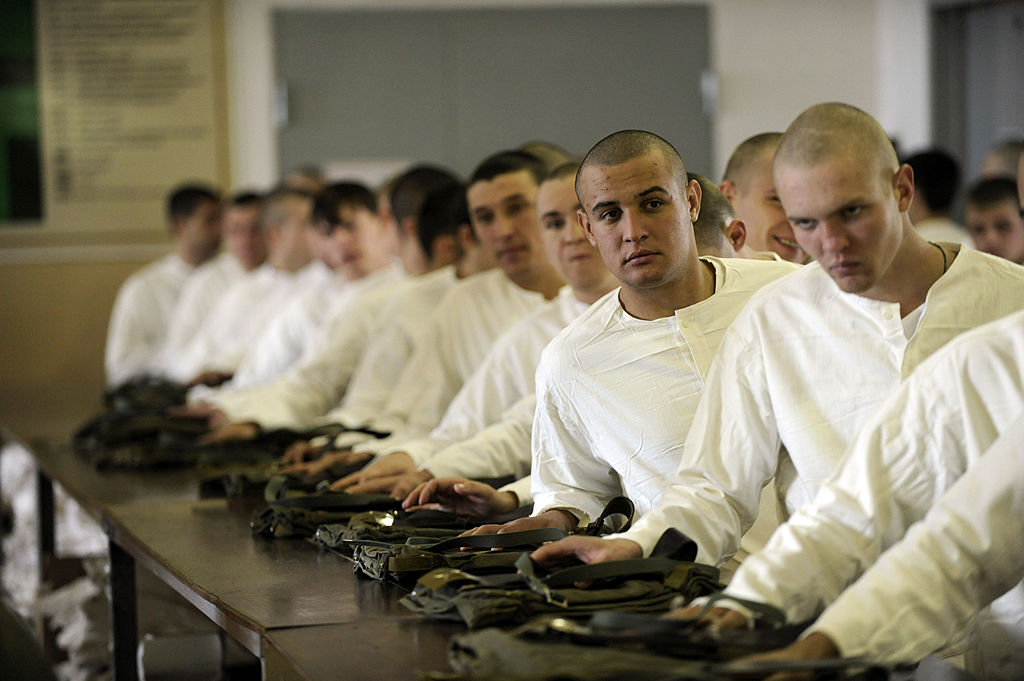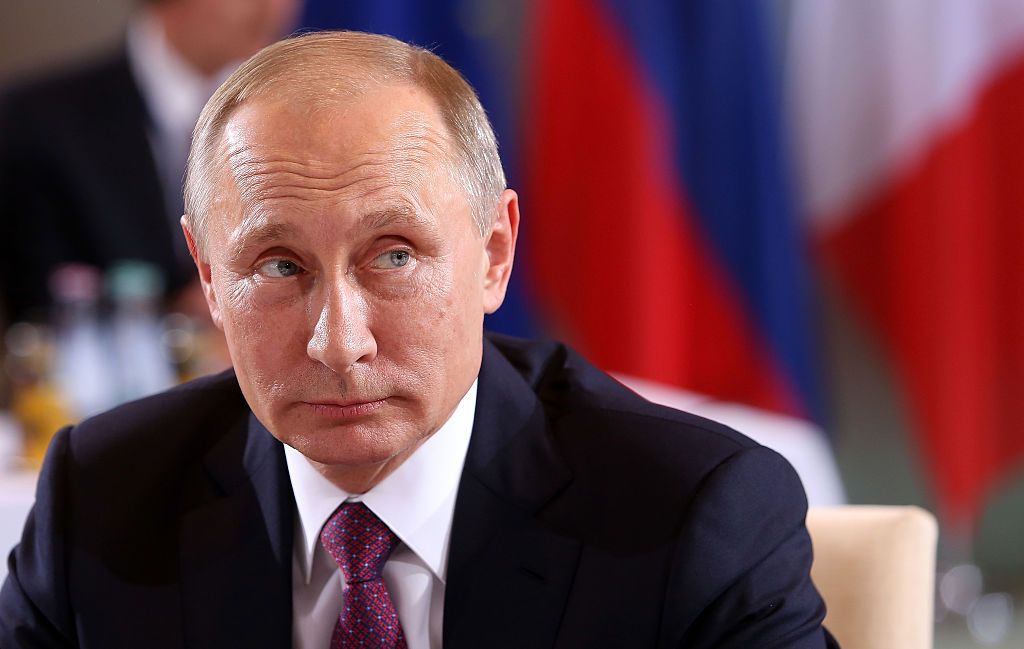Although internationally recognized as belonging to Azerbaijan, the region of Nagorno-Karabakh is populated by ethnic Armenians, who fought a war of secession in the wake of the Soviet Union’s collapse. The area is now an unrecognized but de facto independent republic with strong ties to the Republic of Armenia. Azerbaijan continues to claim the land and has complained that the ethnic Azerbaijani population that once lived there were ethnically cleansed in the war of the 1990s, with approximately one million Azerbaijanis forced to leave the area. Sporadic fighting has occasionally flared up since the end of hostilities in 1994, mostly in the form of artillery exchanges.
Last Sunday witnessed the outbreak of the fiercest fighting since the official end of the conflict — with the use of tanks, armored vehicles and infantry formations, as well as heavy artillery bombardments. Armenia and its separatist allies claim Karabakh was subject to a sudden assault by Azerbaijani forces; Baku, meanwhile, claims that it launched its operation in response to Armenia’s indiscriminate shelling of Azerbaijani territory, which resulted in civilian casualties.
The UN Security Council has demanded the cessation of hostilities and the withdrawal of all forces occupying territories within Azerbaijani borders. However, with the conflict in the Caucasus still raging, we spoke to Hikmet Hajiev, assistant to the President of Azerbaijan and the head of foreign policy affairs for the administration. For those looking to understand the Armenian perspective, read Kapil Komireddi’s interview with the country’s prime minister Nikol Pashinyan here.
Tim Ogden: Armenia claims that they were victim to a sudden, large-scale offensive. Azerbaijan has said the operation is just a retaliation for shelling from Armenian positions. Is that correct?
Hikmet Hajiyev: On September 27, early in the morning at six o’clock, Armenian forces along the line of contact started attacking Azerbaijani civilians, and also Azerbaijan’s military positions, with heavy artillery. As a result of which, the Azerbaijani armed forces decided to take counter-measures and launch a counterattack. But there are also issues that happened before, which prove that Armenia started this provocation; before September 27, we were monitoring a concentration of Armenian troops along the line of contact. At the end of August, there was a sabotage attempt by the Armenian military to penetrate our position and to kill our soldiers and civilians. There were also political provocations from the Armenians, with their prime minister declaring ‘Karabakh is Armenia’, and the Armenian defense minister’s statement of ‘new wars for new territories’.
They have adopted a new aggressive and offensive defense strategy — and new military doctrine — calling for preemptive attacks against Azerbaijan to capture new Azerbaijani territories. What happened on September 27 was not a single or sporadic event but it is one of several elements that reinforce the Azerbaijani position that this was a well-planned, well-calculated military operation against Azerbaijan.
TO: The Azerbaijan response was very large scale operation of its own. Was this prepared in advance, with its forces ready and waiting on the line of contact?
HH: We should understand the whole process first. Armenia has committed acts of aggression against the Republic of Azerbaijan since the 1990s. Armenia, by use of force, occupied Nagorno-Karabakh and seven adjacent territories. This is an act of aggression — and Armenia’s forces are physically present in the occupied territories of Azerbaijan. We’ve always said that.
The illegal presence of Armenian troops on Azerbaijani soil has always been a threat to regional peace and security: we can always expect some escalation. Imagine that along the Armenia-Azerbaijan line of contact, where the line runs through the occupied territories, we have a scenario like the first or second world war: soldiers sitting in trenches targeting one another. In such a situation, every minor incident can cause an escalation. But there is the fundamental question of what Armenian soldiers are doing on the soil of Azerbaijan.
As a sovereign country, Azerbaijan has the right to self-defense to protect its territory and citizens. It goes back to their adoption of a new military doctrine and their defense minister publicly called for ‘new wars against new territories’ — in other words, the occupied territories are not enough, they should occupy new territories in Azerbaijan to ensure the security of the already-occupied territories and also to make sure Azerbaijan’s artillery can’t reach them. It’s a serious concern for Azerbaijan: we have 500,000 civilians living along the line of contact. It’s a dense area with a lot of Azerbaijani villages, some of them are about 100 meters away from the line of contact. It’s the responsibility of the government to ensure the safety of these people, because for the Armenian armed forces, the deliberate and indiscriminate killing of Azerbaijani civilians is a standard procedure.
Last week, Armenian artillery launched a heavy bombardment using the Soviet-made Grad system [a truck-borne multiple rocket launch system] at a city of 70,000 people and completely destroyed it. They even destroyed a settlement for internally displaced peoples and refugees. Believe me, sometimes they’re trying to depict themselves as angels but the situation on the ground speaks to the contrary.
Armenia is occupying territories of Azerbaijan and in doing so ethnically cleansed one million Azerbaijani people — I would ask The Spectator and other media outlets to ask the Armenian prime minister or president about them. For 30 years these people have not been able to return to their homes, many of them are destroyed: the Armenians have committed a lot of war crimes and crimes against humanity. Take the case of the Khojaly massacre, in 1992 they killed 161 people of the Khojaly village — but when these facts are put on the table, they fall silent. It’s mandatory for Azerbaijani armed forces to ensure that the Armenians are not going to carry out yet another such war crime against our civilians. In 2016, we were subject to a heavy bombardment and today they’re doing the same while targeting our civilians. You can consider this operation as peace enforcement, forcing Armenia to peace, forcing them to withdraw their troops from the occupied territories and afterwards we can have prospects of sustainable peace in the region.
TO: At what point were your Turkish allies aware that you were launching offensive operations? Did they have any idea that hostilities were going to commence in advance?
HH: Turkey and Azerbaijan have very close relations and political, cultural and brotherly ties. We are one country, two states. But when it comes to the operational part, Azerbaijan and Turkey have extensive defense cooperation. Turkey, as a Nato country, extensively contributed to the building of the Azerbaijani armed forces as a modern, professional military. We also conduct regular training exercises. These help with the inter-operability between our armed forces but also improve the capabilities of the Azerbaijani military. This helped when we contributed troops to counter-terrorism operations in Afghanistan, Kosovo and Iraq. But as regards this current operation, Azerbaijan does not need any foreign involvement. We have a strong armed forces: we have the personnel, we have enough reserves.
TO: And yet this week it was reported that a Turkish F-16 shot down an Armenian Sukhoi. If you don’t require Turkish help, why are Turkish aircraft bringing down Armenian planes?
HH: There are myth-makers and myth-busters: in this case, I will be a myth-buster. Azerbaijan doesn’t have F-16s — there aren’t any on our soil or in our airspace. We had an intelligence report about this: two SU-25s took off from Armenian territory and were flying towards Azerbaijan but crashed in the air; maybe they hit a mountain. We made a public appeal to the Armenian defense minister asking why they were hiding this from the Armenian people.
They only reported one aircraft lost, so where is the second one? What happened to the pilot? Provide explanations to your own people. They are silent because what they’re saying is fake news. Secondly, the Armenian prime minister said on his Facebook page that four drones of Azerbaijan are in the air around Yerevan — they even shared a video about of Armenian Air Defense units hitting the drones. When we identified this as a staged show and fake news, immediately the Armenian defense minister retracted this. There’s a lot of fake news.
TO: There are reports that Azerbaijan is using cluster munitions in its artillery strikes. Most countries in the world ban their use because they can cause civilian casualties and collateral damage. Azerbaijan is not a signatory to the 2008 convention which was signed in Oslo that bans their use. Is Azerbaijani using cluster ordnance?
HH: Our reservation about signing that treaty was because Armenia’s armed forces make extensive use of cluster munitions against us. We, as a country are facing aggression and an occupation of our territories. We are seeing that they are using cluster munitions in the current operation — not just on the occupied territories but against Azerbaijani settlements in Azerbaijan proper. They are using missile technology, too. But I will reiterate that in our target selection and acquisition, we are very selective and extremely accurate. We make use of the latest drone technology, including reconnaissance drones, and identify targets and make sure they are legitimate military targets. We are only neutralizing legitimate military targets that threaten the Azerbaijani armed forces and Azerbaijani civilians. This has proved effective.
TO: So are your armed forces still using cluster munitions?
HH: We are not using cluster munitions.
TO: One of the greatest points of controversy for Azerbaijan is that there have been many reports that in the ongoing operation, Syrian mercenaries lead the assault. These have allegedly been transported to Azerbaijan using Turkish military aircraft. Why is Azerbaijan — with, as you said, a large, professional and well-equipped armed forces — making use of mercenaries?
HH: In this case, I can also be a myth-buster. Azerbaijan has a strong armed forces and we have enough personnel. We don’t need anyone else; it’s also not our policy to make use of mercenaries. We have reserve forces as well. But I can provide you with some other facts. We have information that Armenia is using mercenaries from Syria and elsewhere — mainly ethnic Armenians — and bringing them to the occupied territories. Some of these are members of established terror organizations such as ASALA — the Armenian Secret Army for the Liberation of Armenia. It was founded in the Middle East, and they’re bringing people to fight against the Azerbaijani armed forces.
TO: So there are mercenaries from Syria and elsewhere in the conflict zone but they’re fighting for Armenia, is that correct?
HH: Yes. It’s also a point of concern that Armenia is trying to involve Armenians from other countries, including from Europe. These are technically mercenaries, since they are nationals of other countries who are joining Armenia’s armed forces to commit acts of terror and atrocities against the people of Azerbaijan.
TO: Talk between the foreign ministers of Russia and Turkey resulted in the foreign ministries of both countries calling for an immediate ceasefire. But President Erdogan is claiming that he’s ready to support Azerbaijan in all of its efforts. You’ve said that Turkey is not supporting the Azerbaijan militarily, so what exactly is the Turkish government referring to when it releases these statements?
HH: It’s political and moral support, which we highly appreciate because we have such close relations. Also, along with Turkey, some other countries in the international community support the territorial integrity and sovereignty of Azerbaijan because we are operating on our own soil — the Azerbaijani armed forces are not in the territory of any other country. But Turkey’s support is political support.
As regards the negotiation process or a ceasefire, every time the Armenians are cheating or deliberately misinterpreting ceasefire agreements. In 1994, when they occupied our territories, they caused a humanitarian catastrophe in Azerbaijan — we had one million internally displaced peoples and refugees. There was a ceasefire arrangement with mechanisms for the withdrawal of Armenian troops and the end of the occupation. But they’ve dragged the negotiations out over 30 years and there are no prospects for success in this.
In 2016, when they committed yet another provocation they ignored calls for a ceasefire — once they ask for one this time, they should also implement the demands of the UN Security Council’s resolutions, which stipulate the immediate, unconditional and full withdrawal of Armenian troops from the occupied territories. But we have learnt from our history, we don’t have any trust in them.
TO: Armenia is also home to a brigade-size combat unit of the Russian Armed Forces at Gyumri. Do you envisage these troops becoming involved in the conflict in any way? How could that affect relations between Azerbaijan and Russia, even if they aid Armenia with humanitarian efforts?
HH: Everyone understands that the Armenian occupation of Nagorno-Karabakh is an extremely sensitive issue in Azerbaijani society because our people have been suffering for 30 years. Sometimes these perception goes unnoticed in the international media. But this is a country that has suffered an occupation for 30 years. We have demonstrated strategic patience. All our international partners understand it is a sensitive issue and that any misconduct may jeopardize any country’s image in Azerbaijan. For example, the French President made a public, unilateral pro-Armenian statement and immediately Azerbaijani social media decided this was unjust. But we have open channels of communication with Russia — we have good neighborly relations with the Russians. We understand they’re interested in the peace and security of this region and they know that without any resolution of this conflict then stability in the Caucasus cannot be guaranteed.
TO: As you’ve just said, Azerbaijan has neighborly relations with the Russian Federation — could those relations suffer if Moscow decides to offer Armenia any assistance, even if it is in the form of humanitarian aid?
HH: In diplomacy, we always try to avoid questions that contain ‘if’. They understand the legitimate security concerns of the parties, including Azerbaijan’s, and we are actually hoping that Russia will play its role in establishing peace in the region.
TO: So do you completely rule out the possibility that the Russian troops in Armenia will not become involved in the conflict militarily?
HH: Everyone understands that any third-party involvement would only aggravate the situation.
TO: What is the ultimate objective of the operation? If it is to completely retake the Nagorno-Karabakh for Azerbaijan, what happens to the Armenian people who live there? Do they become Azerbaijani citizens? Are they suddenly embraced as part of the Azerbaijani nation?
HH: The ultimate goal is the liberation of Azerbaijan’s territories and the safety and security of Azerbaijani citizens. It’s a peace enforcement operation. When this operation started, our first statement was to the Armenian community of Nagorno-Karabakh. We said ‘If you wish, you can come to the Azerbaijani side and become our nationals — we are ready under the constitution and laws of Azerbaijan to provide for all of your fundamental rights and freedoms, to provide food, shelter, and economic prosperity. Azerbaijan is a country full of economic potential but the community of Nagorno-Karabakh lives in poverty under the regime that has been established there. We are ready to provide for all of their rights. But we also have to respect the rights of the Azerbaijani community of Nagorno-Karabakh, whose rights have been violated by the occupiers. They have been deprived of their property and their homes. Once the conflict ends, the Azerbaijani community should be allowed back to Karabakh, all of the internally displaced peoples and refugees.
TO: The operation failed to achieve some of its first day objectives and still hasn’t made the breakthrough it needs for this to end. What is the progress of the operation? Do you see any chance of a swift victory?
HH: In modern warfare, we can’t expect anything like a blitzkrieg. In the first stage, we broke through the first line of defense but you must understand that the region has difficult terrain — mountains, rivers, and forested areas, which make it hard for tanks, vehicles and troops to move.
Also, the Armenians have, over many years, built defenses and fortifications so to save the lives of our soldiers we have chosen tactics and strategies that work towards destroying the major military infrastructure of Armenia, particularly targeted their combat support assets. In a brief period, most of their tank fleets and air defense systems in the area, as well as ammunition dumps, have been destroyed, along with their logistics bases. After this, it will be easier to liberate the territories of Azerbaijan and cross their lines of defense and save the lives of Azerbaijani soldiers.
TO: Stepanakert, Karabakh’s capital, has been heavily shelled and civilian casualties have been reported. Would you like to comment on this? Is this another myth? Did these people not die? Was the city not shelled?
HH: This issue affects both sides. The Azerbaijani cities along the border have been extensively shelled, as a result of which 20 Azerbaijani citizens have been killed and many others seriously wounded. There is one family, all five of whom — including two children — have been killed as a result of deliberate and indiscriminate Armenian artillery fire. In Stepanakert, Azerbaijan’s response was to target an artillery brigade outside of Khankendi — which is the city’s original name — which was neutralized and its base destroyed. Collateral damage in the worst situation that could happen but, in our target acquisition and selection, we are very accurate as far as we can be.
TO: In that collateral damage which you mention, it is possible in artillery duels and counter-battery fire that civilians have been killed in Stepanakert?
HH: We should also ask questions about Armenia’s attacks against Azerbaijani citizens. Ask why they shell them in an indiscriminate way without careful target selection, because their target accuracy — and everyone knows the inaccuracy of those Grad missile systems — bombarding the entire city of Tartar with Grad missiles. Within one day 2,000 pieces of ordnance hit the city.
But what we have done is take careful target selection and acquisition and hit their base outside of Stepanakert, which was used to resupply other artillery units. Collateral damage could happen but it’s also the responsibility of the Armenians. The base was a legitimate military target but, unfortunately, they are placing their military assets in close proximity to civilian settlements. We’ve asked all civilians to flee the area, because the Armenian armed forces will use them as human shields against us and then blame Azerbaijan.
TO: Do you think that the Armenian artillery fire has deliberately targeted civilians?
HH: Absolutely. We have hundreds of facts on the ground, and we have taken international journalists to let them see with their own eyes. If you look at Tartar city, it’s not a city anymore, it’s like Stalingrad.
TO: How do you see this being resolved? And when? Can you estimate a timescale?
HH: That’s difficult. I don’t have a crystal ball. But obviously we are hoping for the Armenians to end their occupation — the occupation must end. They cannot occupy the territory of another country and kill our people. This operation is peace enforcement.
[special_offer]
TO: Will you not stop the attack until Karabakh is taken for Azerbaijan?
HH: Azerbaijan’s intention is to ensure the implementation of the UN Security Council’s resolution, which is the immediate, unconditional and full withdrawal of the armed forces of Armenia. We must make sure Armenia will comply with its international obligations and withdraw its troops from the territory of Azerbaijan. The international community should also help in this regard.
TO: Thank you for taking the time to talk to The Spectator.
This article was originally published onThe Spectator’s UK website.











